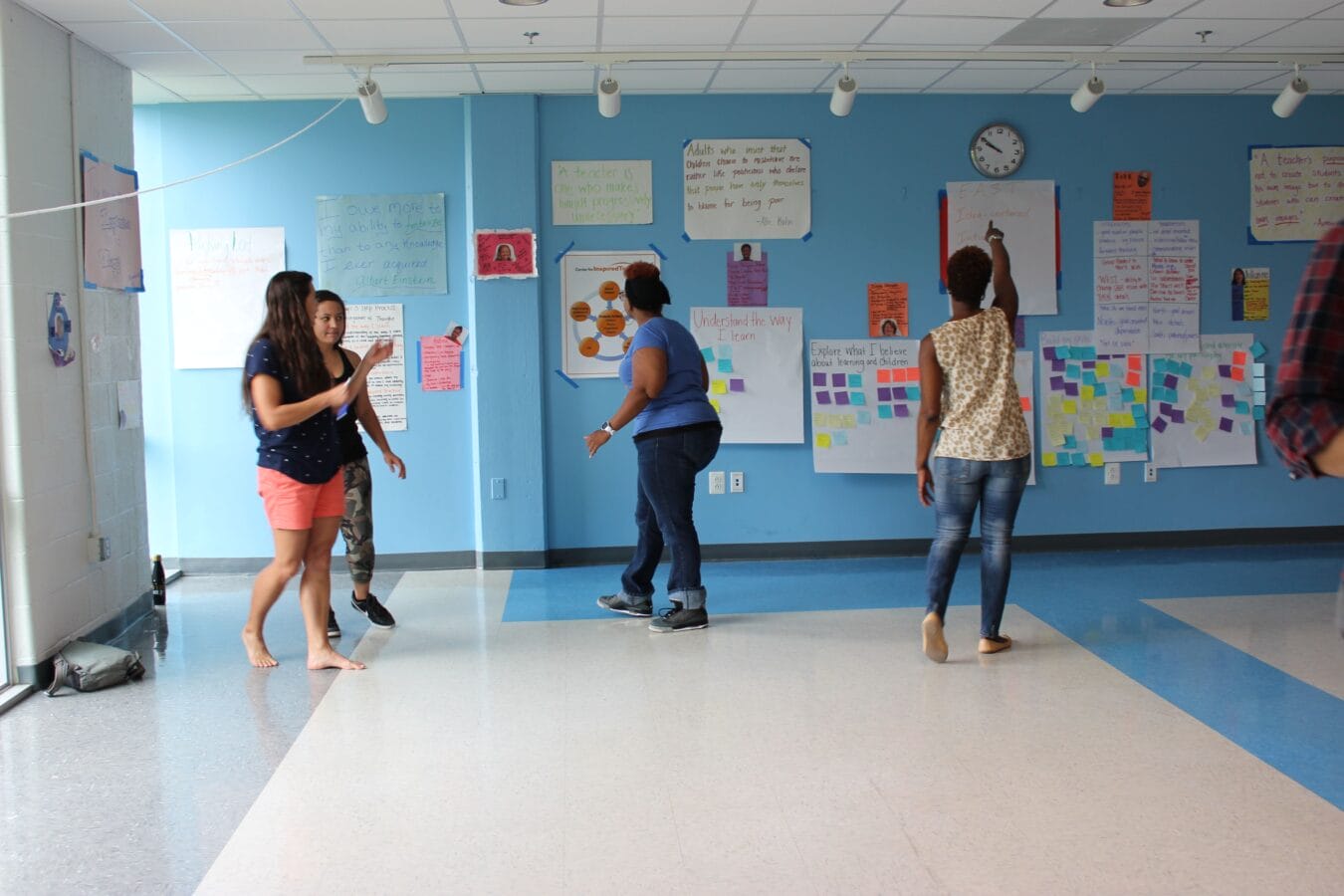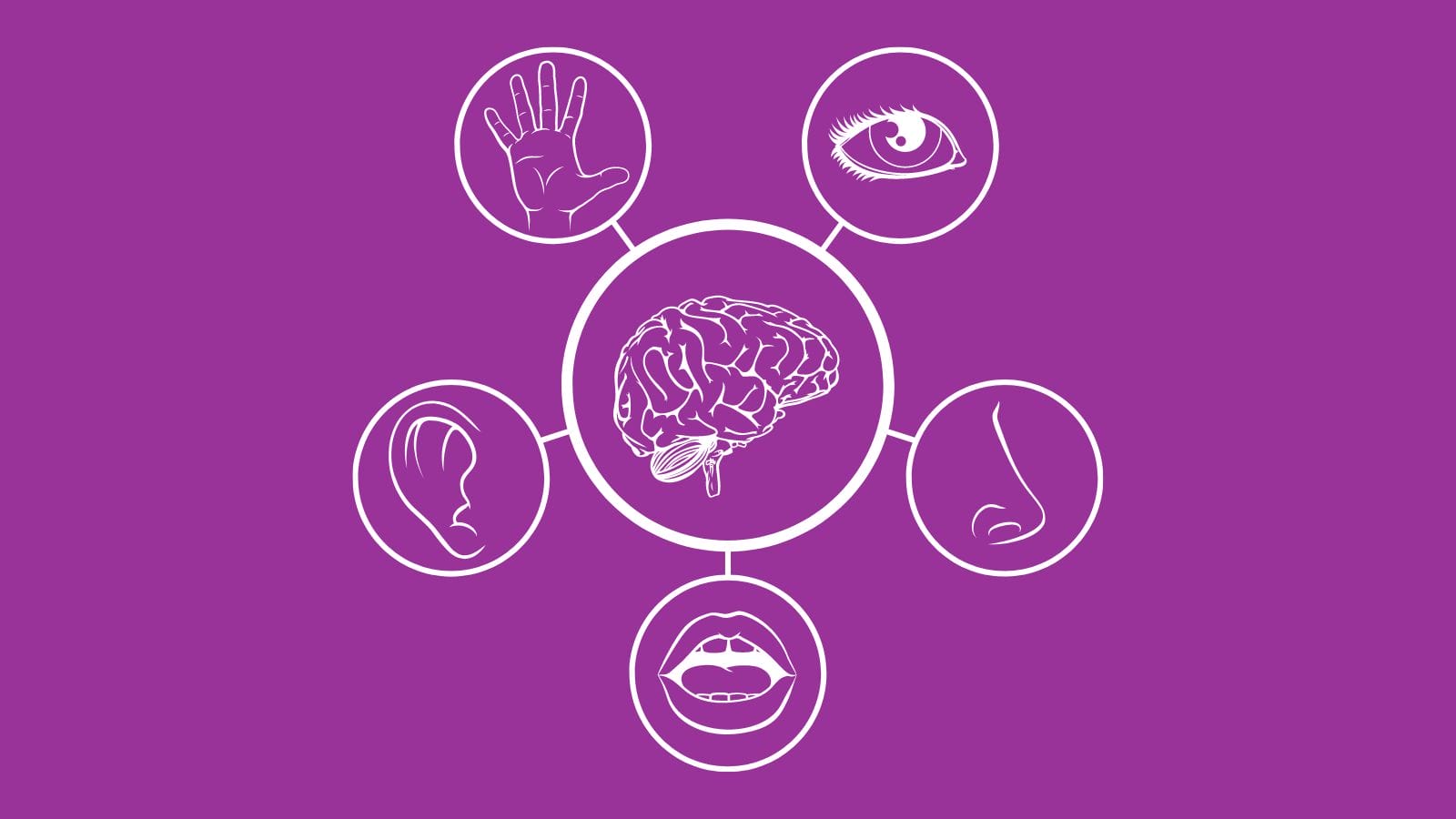If you try this activity with your student(s), we’d love to see what you do. Share your journey via the #Inspired2Learn hashtag on your preferred social platform.
Created by: Jenna Fournel
Discipline: These activities can serve as calming ways to start any class, tools for building self-awareness in advisories, or even ways to explore the senses in science class!
Age level: Elementary through High School
Time: 15-20 minutes for the activity and a debrief
An excellent way to still yourself and get focused when you’re overwhelmed or feeling a little wound up is to reconnect with your senses and what they’re picking up around you. The following activities work best in an outdoor space where learners can move about, but you can also do these activities in a classroom while navigating the indoor space or even sitting at a desk or on the floor if you adapt the prompts to remove references to movement. All of our senses are working all the time and these activities heighten our awareness of that fact. The more learners notice and understand how their body receives and responds to stimuli the more self-awareness and control they will cultivate. These activities invite a pause, a deep breath, and a grounding – all of which can be very helpful throughout the school day.
Walking Meditation (adapted from Headspace)
Find a space where students can walk about but still be within earshot of you as you call out these prompts. It may help to walk with the students as you call them out. Pause after each prompt for 30-60 seconds so the words can settle.
Begin walking around this space at a leisurely pace, stay close enough that you can hear my voice but just focus on your own walking, on your own body.
As you walk, notice how your body feels. Become aware of your posture and the way you’re carrying yourself.
Observe your gait, that’s how you walk. Are your strides long or short?
Tune into any sights that you come across. You’re simply noticing what you see.
Pay attention to the sounds that drift in. What can you hear? Listen for the quiet sounds underneath the loud ones.
Now turn your attention to any smells. What do they remind you of? What images and memories do the smells bring up in your mind?.
Notice any physical sensations, from how the weather makes you feel to how it feels as the sole of your feet touch the ground.
Focus on the rhythm of your feet touching the ground. You can always come back to that rhythm when your mind wanders.
Make your way back to the circle and pause.
Debrief with your learners and ask them what they noticed in this activity either about their bodies, or what was going on in their minds.

Experimentation and Discovery with our Senses
This is a guided reflection you can do with your students on a walk around the school – or the classroom. It raises awareness about how your senses sharpen our perceptions and invites students to wonder about the world around them.
SIGHT (2 min.)
Take two minutes to look around you and notice as many things as you can using your eyes, your sense of sight. Try to memorize everything you notice. Observe how things are placed in the room around you. Notice how the light affects the objects you see, and where the shadows are. Notice what is visible and what is hidden. What is below, beside, above you. Memorize what you see.
SOUND (2 min.)
Now close your eyes and just listen for two minutes. Listen to the sounds in the room. Listen for sounds outside the room. Listen for things that are humming. Listen to your own breath. Open your eyes and look around. What more do you notice about the space?
SMELL (1 min.)
Close your eyes again and if you can, breathe deeply through your nose for one minute, trying to smell whatever you can in the air. Think about the objects around you and see if you can pick up their different scents – fresh laundry, perfume, soap, last night’s dinner, this morning’s coffee. Open your eyes and look around. What more do you notice about the space?
TASTE (1 min.)
(Give each student a mint or lifesaver.) Put this mint in your mouth now and notice how it tastes, but also look around and see if that taste in your mouth helps you see, hear, smell, or feel anything around you differently.
TOUCH (2 min.)
Take two minutes to lightly touch some of the surfaces you see around you, feel whatever you’re sitting or standing on beneath you. Notice the temperature in front of a window or away from it, in front of an AC vent or away from it. What more do you notice about the space?
REFLECTION
You’ve just engaged each of your senses, one at a time, to enhance and deepen your observation of the space in which you find yourself today. Think of this activity as an experiment in which we are investigating the question, “How does each of my senses enhance my understanding of a space?” Each time you engaged a new sense – your sense of touch, smell, taste, etc. – you added a variable to the experiment. How did your understanding of this space change with each new focus?

Inspired Teaching Connection:
An activity like this both establishes and builds upon Mutual Respect in the classroom as it centers the student experience and validates that their perceptions and feelings matter. In that way this is also very much about Student as Expert, particularly of their own experiences. This activity highlights and celebrates the Intellect, Inquiry, and Imagination at the center of how our brains work and how they process the world around us.
See our instructional model here.
Standards Addressed by this Activity
Common Core College and Career Readiness Anchor Standards for Speaking and Listening
Comprehension and Collaboration:
CCSS.ELA-LITERACY.CCRA.SL.1 Prepare for and participate effectively in a range of conversations and collaborations with diverse partners, building on others’ ideas and expressing their own clearly and persuasively.
Collaborative for Academic, Social, and Emotional Learning Competencies
Self-Awareness: The abilities to understand one’s own emotions, thoughts, and values and how they influence behavior across contexts. This includes capacities to recognize one’s strengths and limitations with a well-grounded sense of confidence and purpose.
Self-management: The abilities to manage one’s emotions, thoughts, and behaviors effectively in different situations and to achieve goals and aspirations. This includes the capacities to delay gratification, manage stress, and feel motivation and agency to accomplish personal and collective goals.
Social awareness: The abilities to understand the perspectives of and empathize with others, including those from diverse backgrounds, cultures, and contexts. This includes the capacities to feel compassion for others, understand broader historical and social norms for behavior in different settings, and recognize family, school, and community resources and supports.
Responsible decision-making: The abilities to make caring and constructive choices about personal behavior and social interactions across diverse situations. This includes the capacities to consider ethical standards and safety concerns, and to evaluate the benefits and consequences of various actions for personal, social, and collective well-being.
Relationship skills: The abilities to establish and maintain healthy and supportive relationships and to effectively navigate settings with diverse individuals and groups. This includes the capacities to communicate clearly, listen actively, cooperate, work collaboratively to problem solve and negotiate conflict constructively, navigate settings with differing social and cultural demands and opportunities, provide leadership, and seek or offer help when needed.
